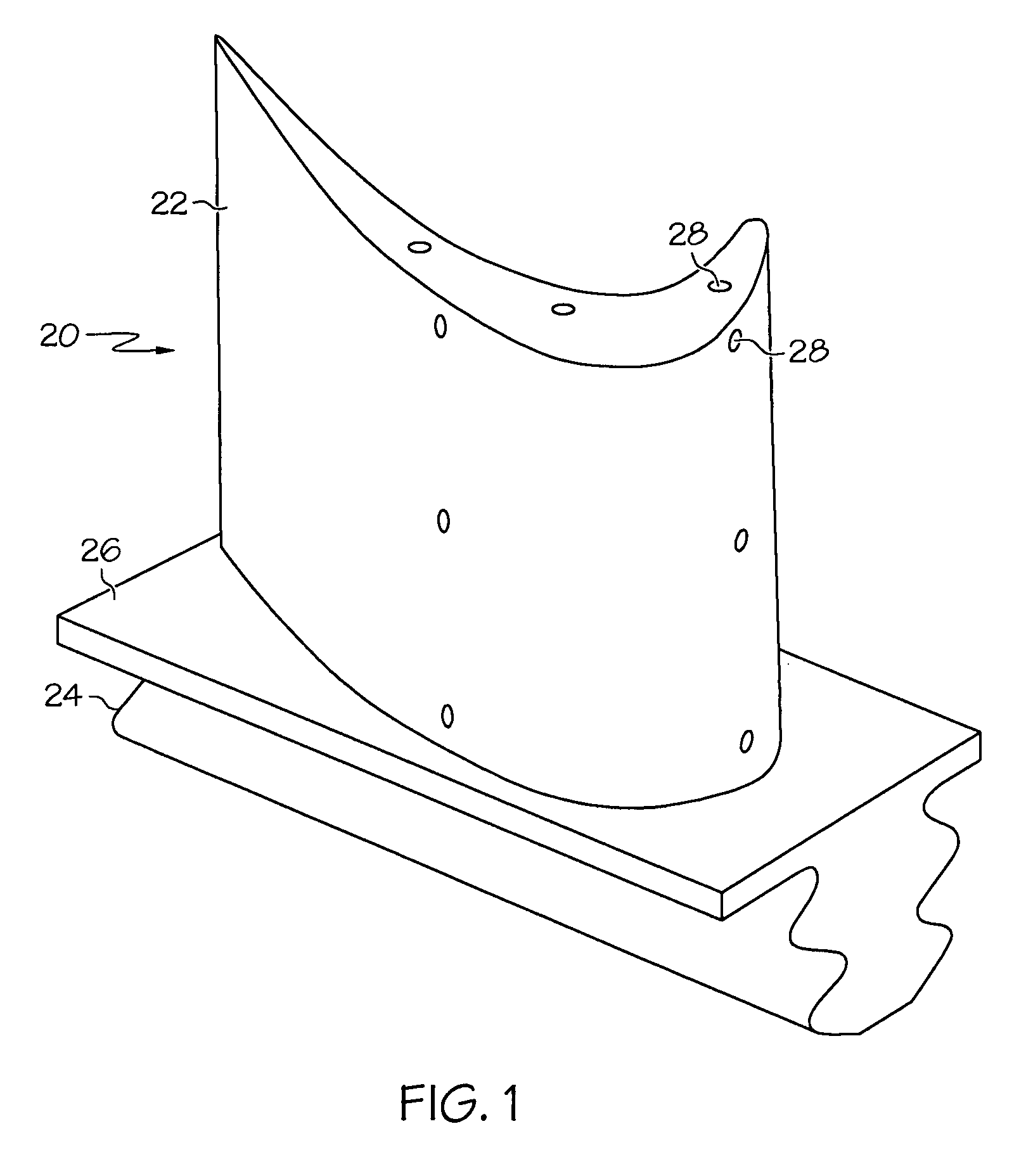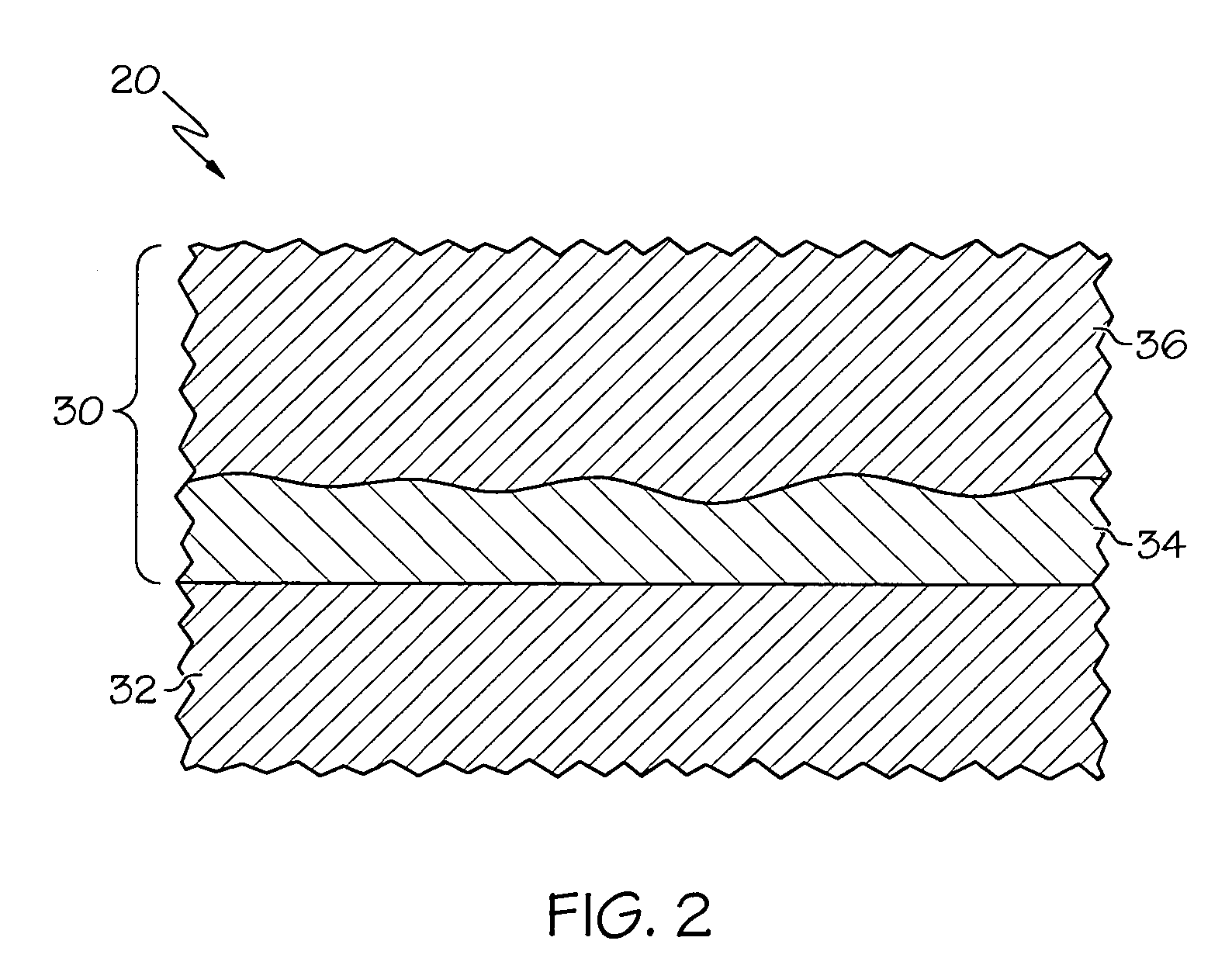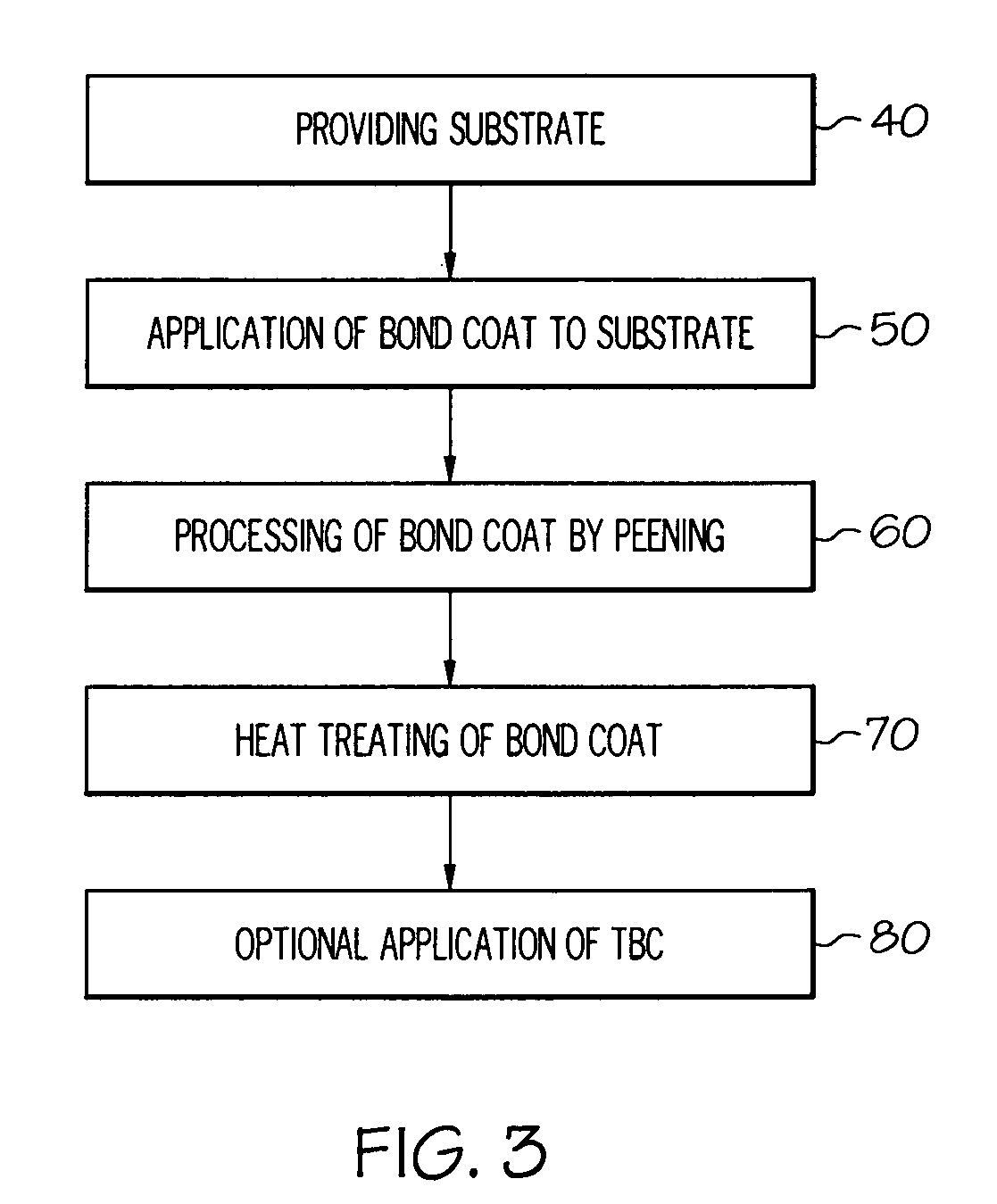Bond coat process for thermal barrier coating
a technology of thermal barrier coating and bonding layer, which is applied in the direction of superimposed coating process, machines/engines, transportation and packaging, etc., can solve the problems of high temperature durability of engine components, corresponding increase in durability, and insufficient mechanical properties, etc., to improve the coating structure and improve the coating structure
- Summary
- Abstract
- Description
- Claims
- Application Information
AI Technical Summary
Benefits of technology
Problems solved by technology
Method used
Image
Examples
example
[0030] The following example is given solely for the purpose of illustration and is not to be construed as limitations of embodiments of the present invention, as many variations of the invention, as many variations of the invention are possible without departing from the spirit and scope of embodiments of the invention.
[0031] In the example, the test samples are turbine blades made from a nickel-base superalloy, available by the trade name Rene N5.
[0032] A process of one embodiment of the invention is used to form a protective bond coating by cathodic arc deposition on test samples as shown in FIG. 4 (“Sample A”) and FIG. 5 (“Sample B”). The bond coat has the following composition: 30 weight percent aluminum, 6 weight percent chromium, 1 weight percent zirconium, and the balance nickel. The bond coat formed has a thickness of 33 microns. Following deposition, Sample B is peened with Z850 ceramic media at an intensity of 12N, 600% coverage. Thereafter, the bond coat is heated to a...
PUM
| Property | Measurement | Unit |
|---|---|---|
| thickness | aaaaa | aaaaa |
| temperature | aaaaa | aaaaa |
| thickness | aaaaa | aaaaa |
Abstract
Description
Claims
Application Information
 Login to View More
Login to View More - R&D
- Intellectual Property
- Life Sciences
- Materials
- Tech Scout
- Unparalleled Data Quality
- Higher Quality Content
- 60% Fewer Hallucinations
Browse by: Latest US Patents, China's latest patents, Technical Efficacy Thesaurus, Application Domain, Technology Topic, Popular Technical Reports.
© 2025 PatSnap. All rights reserved.Legal|Privacy policy|Modern Slavery Act Transparency Statement|Sitemap|About US| Contact US: help@patsnap.com



